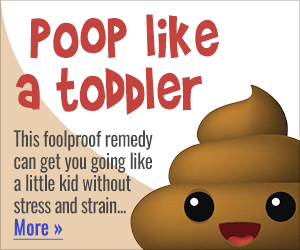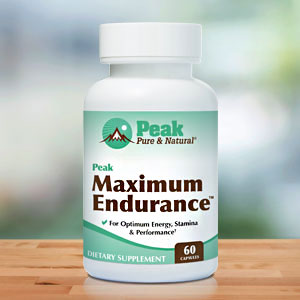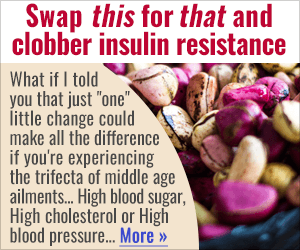Get Easy Health Digest™ in your inbox and don’t miss a thing when you subscribe today. Plus, get the free bonus report, Mother Nature’s Tips, Tricks and Remedies for Cholesterol, Blood Pressure & Blood Sugar as my way of saying welcome to the community!
Focus on protein? The fiber gap matters most

As a cardiologist deeply invested in preventive health, I’ve observed a common trend…
While many individuals are preoccupied with protein intake, a significant number are neglecting a vital nutrient — fiber.
Despite its essential role in maintaining overall health, fiber doesn’t receive nearly the attention it deserves.
The Truth About Fiber Intake
According to a comprehensive study on fiber intake, less than 5% of Americans meet the recommended daily intake for dietary fiber. That’s a 95% deficiency rate for a nutrient proven time and time again to reduce the risk of chronic disease.
As a point of contrast, the statistics are almost exactly flipped for protein: more than 92% of women consume enough protein to meet their estimated average requirements, resulting in an 8% deficiency rate. Many of us consume more than double the protein we need!
The minimum recommended daily intake for fiber is 25 grams for women and 38 grams for men, but the average adult only gets about 15 to 16 grams per day.
This shortfall, often referred to as the “fiber gap,” has significant health implications.
Fiber Matters More Than You Think
Fiber is not just about keeping you regular. It’s a key regulator of metabolism, inflammation, appetite, and immune function, that facilitates superior cardiometabolic outcomes, including:
- Lower all-cause mortality
- Reduced risk of cardiovascular disease
- Improved lipid profiles (lower total and LDL cholesterol)
- Better blood pressure regulation
- Reduced incidence of type 2 diabetes
- Lower weight
All from getting more fiber. Oh, and if that’s not enough, you also get decreased risk of colorectal and breast cancer!
The GLP-1 Connection: Fiber and Appetite Regulation
One of the most fascinating insights from current research is fiber’s impact on GLP-1 (glucagon-like peptide-1), a hormone that helps regulate insulin secretion, blood sugar, and satiety.
When we eat fiber, particularly soluble and fermentable types found in foods like oats, flaxseeds, legumes, and berries, it feeds our gut bacteria. In return, these microbes produce short-chain fatty acids (SCFAs) that trigger the release of GLP-1. This hormonal cascade slows digestion, curbs appetite, and helps prevent overeating.
This is why so many Step One customers report feeling fuller longer and experiencing fewer cravings. It’s all that whole-food fiber at work, activating a powerful metabolic feedback loop.
By the way, if “GLP-1” seems familiar, it’s because this is the hormone that is delivered by drugs like Ozempic, Wegovy, Mounjaro and Zepbound. And in case you’re wondering why we are injecting artificial GLP-1 into people in the setting of near universal fiber deficiency — instead of first making sure that fiber gap is closed so that GLP-1 levels can go up naturally — welcome to my indignation.
The Fiber Gap and Chronic Disease
Low fiber intake is a public health crisis. It’s directly linked to:
- Obesity and weight gain
- Elevated cholesterol levels
- Hypertension
- Insulin resistance
- Inflammation and oxidative stress
Is it any wonder our society is awash in heart disease, pre-diabetes and diabetes, obesity, and chronic pain? And why are we seeing more colorectal cancer in younger and younger people? While medications can address some of these issues, fiber works upstream, ultimately helping prevent these problems from occurring in the first place.
Bridging the Gap with Step One Foods
This is exactly why I created Step One Foods.
Two daily servings of our products deliver at least 10 grams of fiber, using only whole food ingredients like chia seeds, oats, and walnuts. These foods naturally provide the types of fiber (soluble, insoluble, and fermentable) that your body and microbiome need to function optimally.
If the average person is missing about 10 grams of fiber per day, two servings of Step One get you there, closing the fiber gap. All without supplements or drastic diet changes.
Our foods are also backed by clinical data. In a Mayo Clinic-led randomized controlled trial, participants who consumed Step One Foods twice daily saw rapid, significant reductions in LDL cholesterol, providing yet another proof point regarding the health-building properties of our foods.
It’s Time to Focus on Fiber
We’ve spent decades worrying about fat, carbs, and most recently, protein. But if I could get every patient to focus on one nutrient starting today, it would be fiber.
The science is clear. The benefits are vast. And the solution is simple: eat more real, whole, plant-based foods.
And let Step One help. We’ve done the heavy lifting by creating delicious, clinically supported options that make meeting your fiber goals easy and enjoyable.
Your body will thank you. So will your heart.
Editor’s note: Are you feeling unusually tired? You may think this is normal aging, but the problem could be your master hormone. When it’s not working, your risk of age-related diseases skyrockets. To reset what many call “the trigger for all disease” and live better, longer, click here to discover The Insulin Factor: How to Repair Your Body’s Master Controller and Conquer Chronic Disease!














